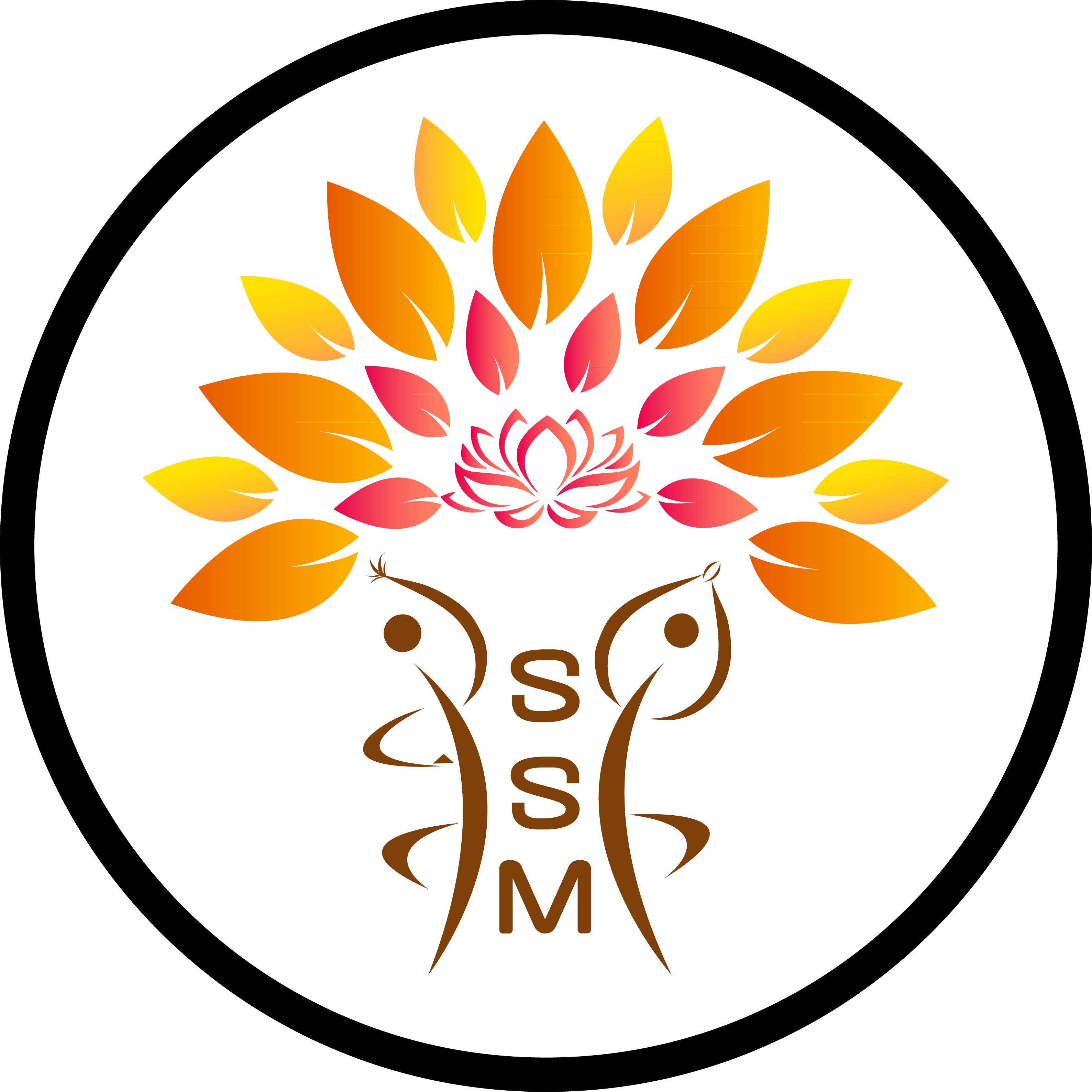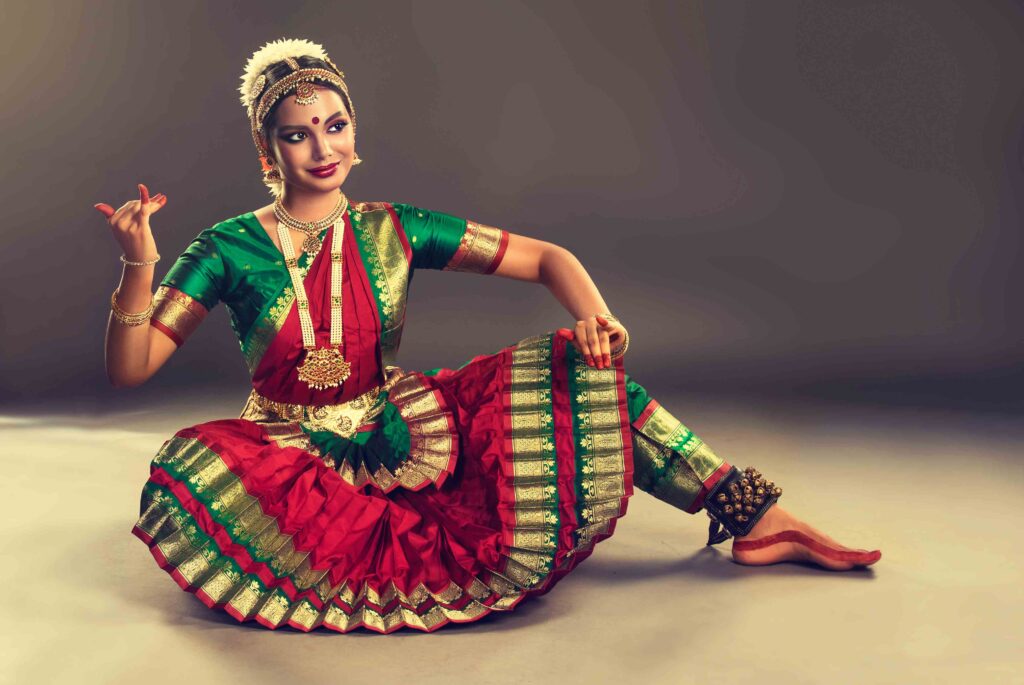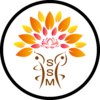Bha denotes emotion (Bhava), Ra denotes music (Raaga), Ta denotes rhythm (Taal), and Natyam denotes dance. Bharatanatyam is a kind of dance that rigorously lives by the Natyashastra and incorporates music, rhythm, and expression.
The mother of many other Classical Indian dance forms, Bharatanatyam. It is the oldest of al the other classical Indian dance. Bharatanatyam was born in the Tanjore area of Tamil Nadu. Bharatanatyam in Tamil Nadu’s Hindu temples later took off in South India. It features Natya, Nrita, and Nritya and was done with outstanding footwork and stunning gestures.
A Bharatanatyam dancer’s costume is more or less comparable to that of a Tamil Hindu bride. Dancers’ magnificent custom-made saris are comprised of fabric that has been properly pleated and falls in front from the waist. Traditional jewelry works well to complement the sari draped in a specific way. Traditionally plaited hair is frequently decorated with flowers. A belt of jewels decorates the waist, while the ankles are wrapped in melodic anklets called ghunghru or Salangai, which are made of leather straps and have tiny metallic bells connected to them. Henna is frequently used to add color to dancers’ feet and fingers in order to draw attention to their hand gestures.
Carnatic classical music serves as the foundation for Bharatanatyam music. The “Mridangam” and two cymbals are the main musical components of Bharata Natyam. Also heard on occasion are the veena, violin, ghatam, and flute. In the performance, verses are recited in Sanskrit, Tamil, Kannada, and Telugu.
A Bharatanatyam Arangetram, or solo debut performance, marks the end of a new dancer’s initial official mark in Indian Classical Dance. Arangetram literally means “ascending the stage.” This performance is usually given between ten and twelve years after a dancer starts studying Bharatanatyam. Still, more significantly, it is given when the teacher thinks the pupil is prepared for a solo performance. This solo debut is comparable to a celebration of “coming of age,” but in the context of Indian classical dance. The Arangetram is a chance for the dancer to demonstrate his or her commitment and talents shaped over the years. It is the culmination of many years of hard work by the student and the guru.
Bharatnatyam is a traditional dance style that has several advantages. It has numerous health advantages.
- Improves Flexibility
- Increases Stamina
- Improves Balance
- Increased Heart Health
- Improved Concentration
Bharatnatyam hand mudras play a significant role in Bharatnatyam. Bharatnatyam is related to expressions and gestures which help in delivering the message and feelings. The use of mudras and expressions enhances flexibility while also allowing dancers to communicate with the audience.
Bharatnatyam, like many other dance styles, has a lot of movements that aid in building muscle strength. Sometimes, these physical movements are difficult, and it takes some time to maintain the postures. A few hours of practice and movement during Bharatanatyam are just as beneficial for improving stamina as yoga or exercise.
Bharatnatyam aid in enhancing the body’s balance. Other postures can be used to increase balance, such as standing on one foot for a short period. Yoga and Bharatnatyam both have health benefits for the body. Pumping and circulating blood more quickly while dancing. Bharatnatyam requires a lot of energy, just like many other dancing styles, and ultimately improves blood circulation in the body. Dance and exercise go hand in hand.
To perform successfully while practicing Bharatnatyam, one must keep in mind the mudras, karanas, and hastas. To recall all of this well, one must focus and pay close attention. While performing, a dancer must be able to recall many gestures, steps, beats, and expressions. Bharatanatyam ultimately aids in enhancing cerebral abilities, attention, and mental alertness.
A lot of facial expressions are required in Bharatnatyam. It requires the movement of the lips, neck, eyes, and brows, which strengthens the muscles. The continual use of facial muscles strengthens the facial tissues. Different expressions convey various emotions, such as grief, rage, and happiness. Dancers who practice Bharatnatyam have beautiful skin and graceful eyes. The eye muscles are trained through eye movements.
Shree sanga mudra has been cherishing Bharatnatyam for almost a decade. They offer the best Bharatanatyam dance class in Chennai. The dance academy shapes students through Bharatnatyam in branches like Periyar Nagar, Pattalam, and Purasaiwakkam. Being one of the best Bharatanatyam dance classes for beginners, we analyze different teaching techniques and will adjust our approach based on the ability and age of the student. We also offer online classes for all Bharathanatyam enthusiasts.
Book a Class now and embrace your passion for Bharatnatyam


